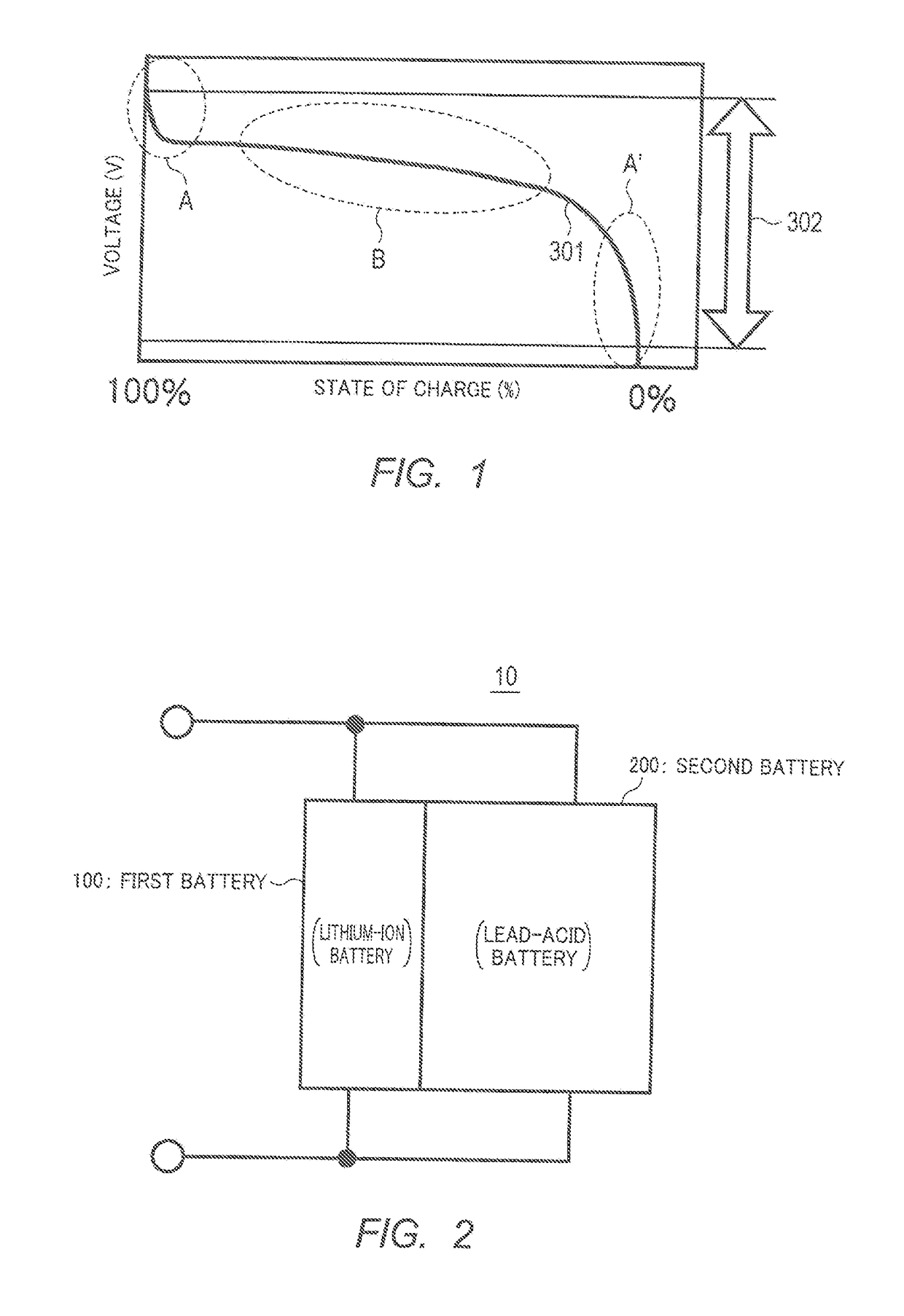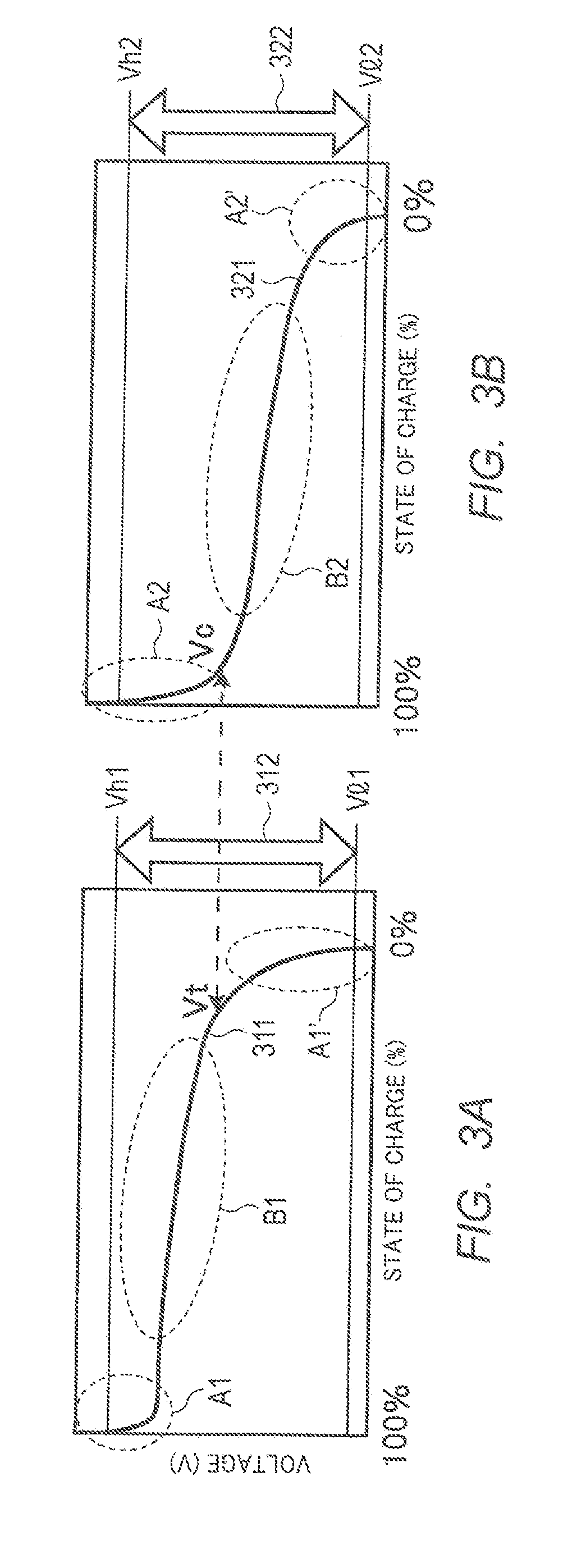Battery apparatus
a battery and battery technology, applied in the field of battery systems, can solve the problems of high manufacturing cost, low charge receiving performance of lead-acid batteries, and difficulty in efficiently storing regenerative energy available during vehicle braking, etc., and achieves high charge receiving performance, easy deformation, and easy deformation
- Summary
- Abstract
- Description
- Claims
- Application Information
AI Technical Summary
Benefits of technology
Problems solved by technology
Method used
Image
Examples
Embodiment Construction
[0025]Hereinafter, a description will be given of an embodiment of the present invention with reference to the accompanying drawings.
[0026]First, an overview of the present invention will be described.
[0027]FIG. 1 is a diagram illustrating an example of a discharge characteristic of a general secondary battery (hereinafter, referred to as “battery”). In FIG. 1, the horizontal axis represents the state of charge (SOC) [%] within a range from 100% to 0%, and the vertical axis represents the voltage [V]. In addition, the terms “initial phase” and “terminal phase,” and “start phase” and “end phase” are used in the following description with the direction in which discharge proceeds, as the basis.
[0028]As illustrated in FIG. 1, in discharge curve 301, which is a discharge curve of a general battery, when discharge continues, the state of charge decreases (i.e., the remaining charge capacity decreases), and the voltage decreases with the decrease in the state of charge. The discharge init...
PUM
| Property | Measurement | Unit |
|---|---|---|
| voltage | aaaaa | aaaaa |
| voltage | aaaaa | aaaaa |
| nominal voltage | aaaaa | aaaaa |
Abstract
Description
Claims
Application Information
 Login to View More
Login to View More - R&D
- Intellectual Property
- Life Sciences
- Materials
- Tech Scout
- Unparalleled Data Quality
- Higher Quality Content
- 60% Fewer Hallucinations
Browse by: Latest US Patents, China's latest patents, Technical Efficacy Thesaurus, Application Domain, Technology Topic, Popular Technical Reports.
© 2025 PatSnap. All rights reserved.Legal|Privacy policy|Modern Slavery Act Transparency Statement|Sitemap|About US| Contact US: help@patsnap.com



